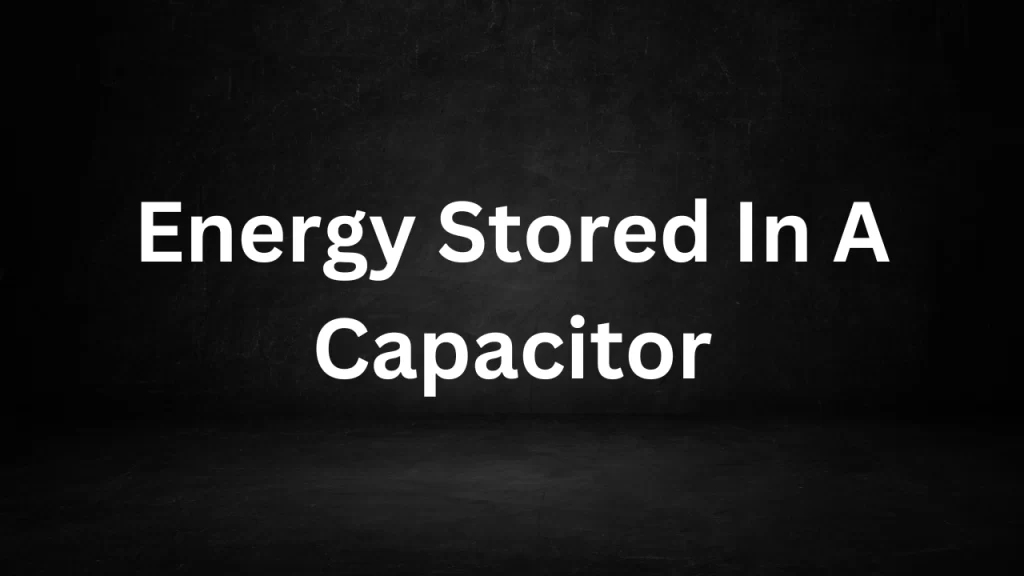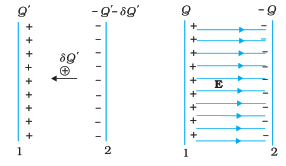Tag: capacitance dielectrics electric energy storage
Energy Stored In A Capacitor
Energy Stored In A Capacitor. A capacitor is an essential component in electronics that stores electrical energy in an electric field.
The energy stored in a capacitor is a direct result of the voltage applied across its terminals and the amount of charge it can hold. The formula to calculate the energy stored in a capacitor is given by:

Energy (E) = 0.5 × Capacitance (C) × Voltage (V)^2
Where:
- Energy (E) is the energy stored in the capacitor, measured in joules.
- Capacitance (C) is the measure of a capacitor’s ability to store charge, measured in farads (F).
- Voltage (V) is the potential difference across the capacitor’s terminals, measured in volts.
This formula demonstrates that the energy stored in a capacitor is proportional to the square of the voltage and the capacitance. Capacitors with higher capacitance or higher voltage can store more energy. When a capacitor is charged, it accumulates energy in the electric field between its plates. This stored energy can later be released when the capacitor is discharged.
The energy stored in a capacitor plays a crucial role in various electronic applications, including smoothing voltage fluctuations, filtering signals, and providing bursts of energy in circuits. Understanding how capacitors store and release energy is fundamental in designing efficient and reliable electronic systems.
Energy Stored in a Capacitor: Explained Further
A capacitor, a fundamental component in electronics, is not just about storing charge; it’s also a reservoir of energy in the form of an electric field.
This stored energy becomes vital in various electronic applications, and comprehending its calculation sheds light on the capacitor’s significance.

Formula and Components:
The energy stored in a capacitor is directly linked to the voltage across it and the amount of charge it can accumulate. The formula to calculate this energy is:
Energy (E) = 0.5 × Capacitance (C) × Voltage (V)^2
Capacitance (C): This property measures how much charge a capacitor can store for a given voltage. It is measured in farads (F).
Voltage (V): The potential difference between the capacitor’s plates, measured in volts. It’s the driving force behind the energy storage process.
Understanding the Equation:
The formula highlights that energy stored is proportional to both the capacitance and the square of the voltage. This means that doubling the voltage will result in a fourfold increase in energy, while doubling the capacitance will result in a twofold increase.
Energy Storage Process:
When a capacitor is connected to a power source, it charges as it accumulates electric potential energy. The energy is stored as an electric field between the capacitor’s plates.
This field exerts a force on the charges, preventing further accumulation of charge. Once fully charged, the capacitor contains energy that can be released when needed.
Applications:
Filtering and Smoothing: Capacitors are often used to filter out noise and voltage fluctuations from electrical signals, ensuring a stable output.
Energy Storage: In circuits like camera flashes, capacitors can quickly store energy and release it in a burst when needed.
Backup Power: Capacitors can provide temporary power during brief interruptions, allowing systems to shut down safely.
Timing Circuits: In combination with resistors, capacitors are crucial in creating time delays and oscillations in electronic circuits.
Conclusion:
The energy stored in a capacitors exemplifies the interplay between voltage, capacitance, and electric fields. This energy reservoir is pivotal in electronics, contributing to diverse applications that range from signal processing to energy bursts.
Understanding the nuances of energy storage enhances our ability to design efficient and responsive electronic systems.
Read More
Frequently Asked Question (FAQs)
What is the energy stored in a capacitor?
The energy stored in a capacitor refers to the electric potential energy stored in the electric field between its plates when it’s charged.
How is the energy stored in a capacitor calculated?
The energy stored in a capacitors can be calculated using the formula: (E) = 0.5 × Capacitance (C) × Voltage (V)^2.
What is capacitance?
Capacitance is a measure of a capacitor’s ability to store charge for a given voltage. It is measured in farads (F).
How does voltage affect the energy stored in a capacitor?
The energy stored in a capacitors is directly proportional to the square of the voltage applied across its terminals. Doubling the voltage results in a fourfold increase in stored energy.
Can a capacitor store an infinite amount of energy?
No, a capacitor’s energy storage is limited by its capacitance and voltage. It cannot store an infinite amount of energy.